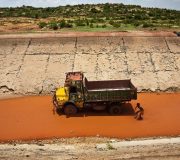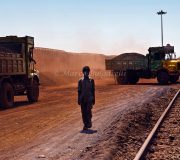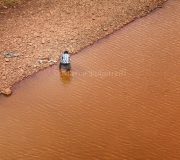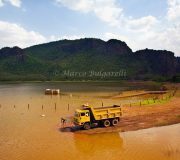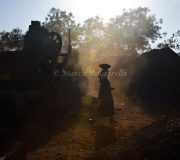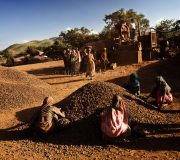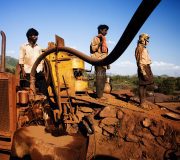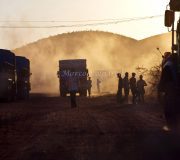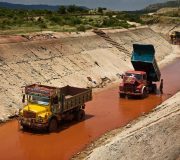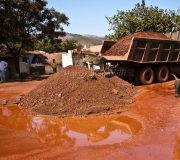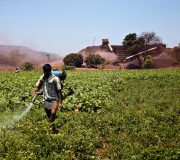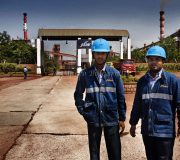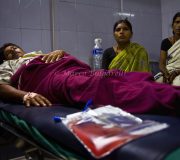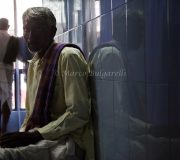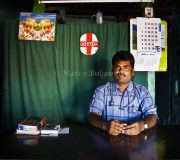Bellary's mines (India)
The ruins of Vijayanagara, the former capital of the Vijayanagara Empire flourished between the 14th and the 16th centuries in Hampi, Karnataka, they are listed as a UNESCO World Heritage Site. Only eight km away from this holy and peaceful place the hell of the Indian iron ore rush is taking place.
The international boom has made India the third largest exporter of iron ore in the world; a third of the exports came from the Bellary area. The Mining and Geology Department records show, that this region alone exported 15 million tones of high quality iron ore worth $67 million overseas, mainly to China.
A boom in the construction industry there, accelerated by the 2008 Olympic Games in Beijing, pushed the international price of iron ore from $17 per tonne in 2000-2001 to its peak-in 2004-2005- when the price touched $75.
At present, most of the iron ore is exported (60%). Therefore, there is growing demand from the Indian Steel giants for reducing export and supplying it to the Indian market.
The giants of the industry - Arcelor Mittal, Posco, Tata Steel all want to build steel plants. In 2008 Steel prices have almost doubled surpassing $700 per ton. This excess demand for steel is adding tightness to markets for steel-making raw materials like iron ore. The demand for iron ore is so great that some countries are moving to ban exports in order to keep domestic prices at reasonable levels.
In India, the shift to privatisation and open market economy after the new economic policies has pushed women and children into the informal labour force. Especially in sectors like mining where the deregulation of laws is common to attract direct and private investments. Meanwhile the collapse of agriculture due to recurrent drought and mechanization forced the landless agricultural labourers to look for other means of wage earnings.
The migrants from the decimated agricultural sector started floating from mining plot to mining plot searching for sustenance in an informal system of contract labour in the mining triangle.
By 2005, the hectic scramble for iron ore led to an uncontrollable social and ecological chaos in the Bellary – Hospet – Sandur district. Most of the mining operations are done by small illegal mining companies, which do not follow any environmental or social regulation.
The working and living conditions of the workers are highly exploitative, inhuman and do not have even the very basic amenities either for work safety or for minimum human living needs. Lack of even basic facilities has led to high level of insanitation, ill health and social chaos. Bellary has the highest incidence of HIV in Karnataka.
The mining dust, a suffocating rust-coloured cloud coats everything in and around the mining triangle. Mine workers are developing more serious and chronic illnesses like tuberculosis, silicosis, cancers and respiratory illnesses so they became unable to perform any labour and have to push their children earlier into this hazardous industry.
Around 60,000 daily wage labourers work in the district in the iron ore mines, half of them children under the age of 14 and around 20,000 women. The daily wages paid for men is around 1,20 euro, for women around 0,76 euro and for children 0,53 euro, a family earns about 15-22 euro a week during the peak period.
Once famous for its sandalwood forests and abundant wildlife, the area now trembles with the blasting of ore-laden hillsides and the rumble of lorries transporting rock from the mines to ports around India. The uncontrolled mining has had serious consequences, from the illegal exploitation of forestlands to widespread pollution, rampant corruption and exploitation of child labour.



